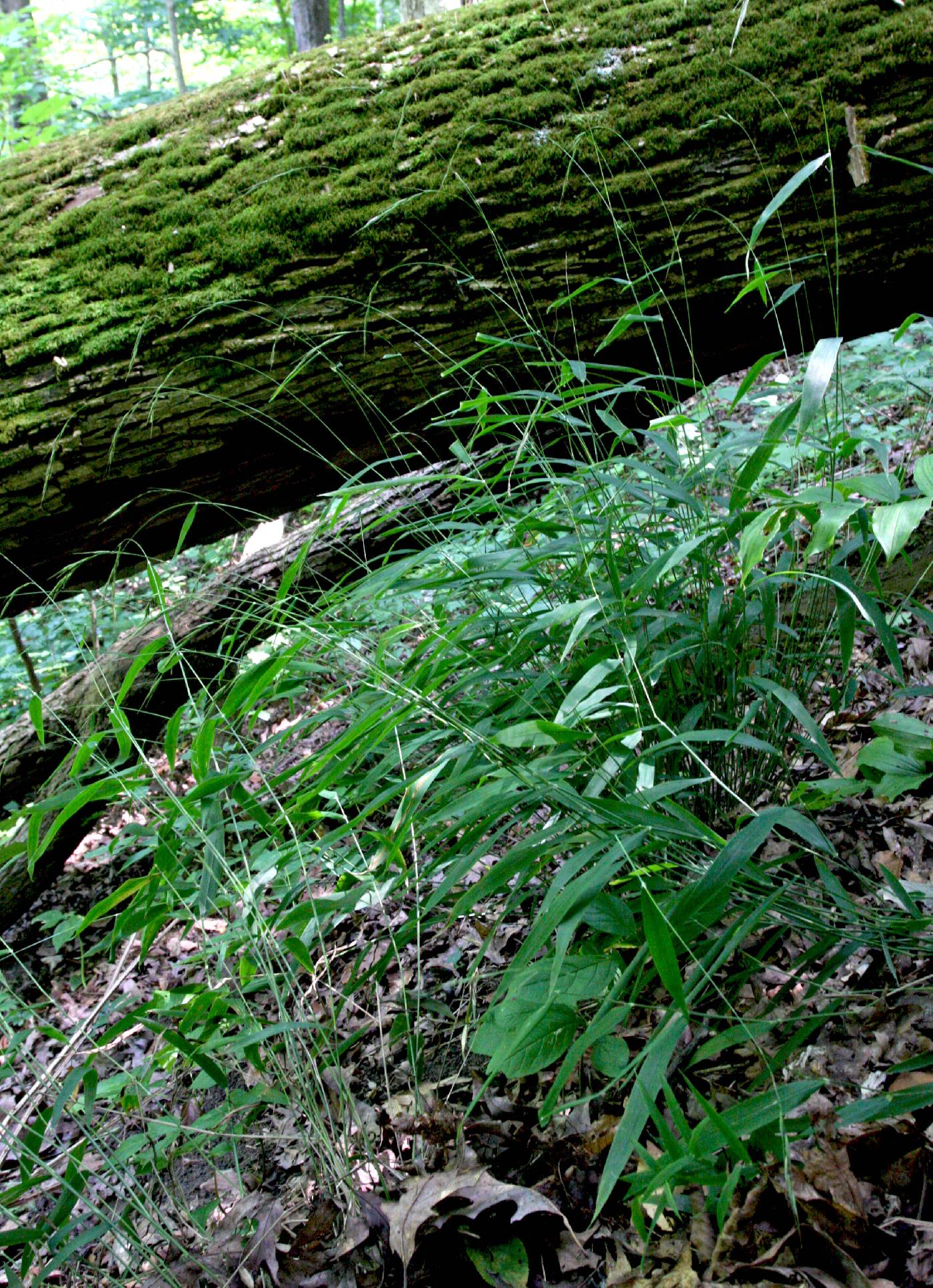
|
Family: Poaceae |
Plants perennial; rhizomatous, rhizomes knotty. Culms 28-102 cm, erect, not branched above the bases; internodes solid; nodes glabrous or retrorsely pubescent. Leaves mostly cauline; sheaths open; auricles absent; ligules membranous; lower leaf blades absent or reduced; upper leaf blades flat, tapering both basally and apically. Inflorescences terminal panicles, contracted; branches appressed, with 1-3(5) spikelets. Spikelets pedicellate, terete to dorsally compressed, with 1 floret; rachillas prolonged beyond the floret base, glabrous; disarticulation above the glumes, beneath the floret. Glumes 1 or 2; lower glumes 0.1-1.1 mm, sometimes absent; upper glumes 0.2-7 mm, clearly exceeded by the florets; florets 8-12 mm; calluses about 0.8 mm, blunt, with hairs; lemmas membranous to coriaceous, scabrous, enclosing the paleas, 5-veined, tapering, awned, awns terminal, lemma-awn transition gradual; awns 9.5-32.5 mm, longer than the lemma bodies, straight, scabrous; paleas subequal to the lemmas, 2-veined; lodicules 2, veined; anthers 3, yellow; styles 2, bases free, white. Caryopses linear, longitudinally grooved, apices beaked, pubescent; hila linear. x = 11. Name from the Greek brachys, 'short', and elytron, 'husk' or 'involucre', a reference to the short glumes. Spikelets 1-fld, articulated above the glumes; glumes minute, subulate to triangular, 1-veined; lemma linear-subulate, herbaceous, rounded on the back, gradually tapering into an elongate awn; palea 2-keeled; rachilla prolonged into an elongate bristle appressed to the furrow of the palea; perennial from knotty rhizomes, with solid culms, broad, flat lvs, short, membranous ligule, and narrow, few-fld panicles of readily deciduous spikelets. Monotypic. Gleason, Henry A. & Cronquist, Arthur J. 1991. Manual of vascular plants of northeastern United States and adjacent Canada. lxxv + 910 pp. ©The New York Botanical Garden. All rights reserved. Used by permission. |
This project was made possible in part by the Institute of Museum and Library Services [MG-70-19-0057-19].
Powered by Symbiota



